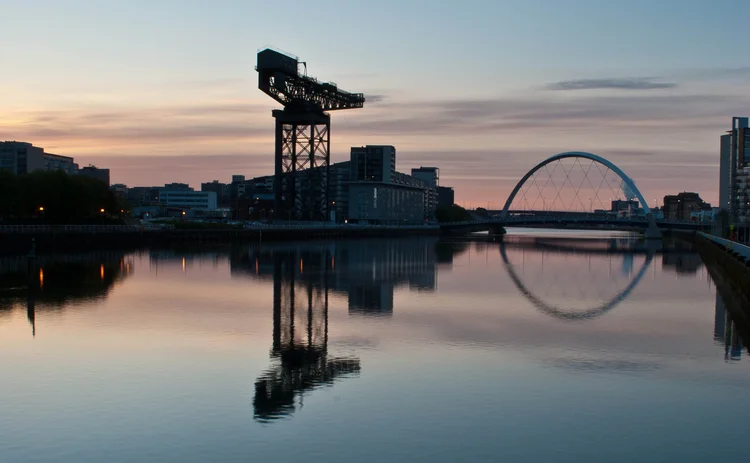
This article was paid for by a contributing third party.More Information.
Did COP26 deliver?

Jaspreet Duhra, S&P Dow Jones Indices (S&P DJI), explores the opportunities that came out of the 2021 UN Climate Change Conference in Glasgow, and why S&P DJI will continue to produce rules-based indices that align with a 1.5° Celsius scenario

The dust has now settled on the 2021 UN Climate Change Conference (COP26). Did the gathering of almost 200 nations succeed in putting us on a path towards limiting warming to 1.5°C?
COP26 concluded with the signing of the Glasgow Pact, which agreed to “keep 1.5°C alive”. Some of the agreements made include strengthening 2030 emissions reduction targets, annually revising these targets and a “phase-down” of coal.
However, post-COP26, many felt an air of deflation. Alok Sharma, president of COP26, said: “We’re all well aware that, collectively, our climate ambition and action to date have fallen short on the promises made in [the Paris Agreement on climate change].”
Some areas of concern
There was a lack of visible commitment and priority from some of the world’s largest polluters. Notably absent were national leaders from China and Russia, the largest and fifth-largest contributors, respectively, of national carbon dioxide emissions. However, China did issue a surprise declaration on Enhancing Climate Change Action in the 2020s in partnership with the US.
There is a legacy of failed pledges – most famously the unfulfilled pledge for $100 billion in climate finance for developing nations by 2020. It is therefore unsurprising that headline-grabbing pledges made in the first week of COP26 have been overshadowed by inevitable questions around whether they will be realised. Then there is the failure of some countries to commit to net zero by 2050. India’s commitment to reach net zero by 2070 was a notable announcement at COP26. A significant step, certainly, but 2070 net-zero commitments will not restrict warming to 1.5°C.
Reasons for optimism
There were many pledges and commitments made at COP26. In addition, COP26 provides a platform for smaller nations. Though the limelight focuses on high-profile politicians and the crucial pledges of large nations, the conference is an important forum to also hear the pleas of smaller nations that may produce little in terms of greenhouse gas emissions, but may face the negative consequences of climate change.
COP26 represents a great opportunity, not just for official delegates from nations to gather but also for the wider community to lobby for change. For example, the Fairtrade Foundation supported the participation of a delegation of farmers whose livelihoods are threatened by climate change. Local campaigners demanded climate action from politicians.
Climate change is climbing agendas, and this rise is facilitated by high-profile events such as COP26. Climate issues are now covered more comprehensively in the media and are better understood by the wider population, and there is broad support for the idea that action needs to be taken.
Many companies have, for some time, recognised their ESG responsibilities. It is positive to see segments of the private sector demonstrating an understanding of the risks and opportunities specifically regarding climate change and committing to net zero by 2050. During COP26 there was a notable announcement through the Glasgow Financial Alliance for Net Zero (GFANZ) to commit more than $130 trillion of private capital to transform the economy to align with net zero.
What does this mean for indices?
As a provider of climate benchmarks, we closely follow developments at all UN Climate Change Conferences and evolving investor requirements. Increased demand from asset owners and commitments made by asset managers to account for climate change in their portfolios result in more interest surrounding net-zero-aligned indices.
The S&P PACT indices (S&P Paris-Aligned & Climate Transition Indices) are 1.5°C-aligned and available in several regional exposures, with the S&P UK Net Zero 2050 Paris-Aligned ESG Index being the most recent addition.
S&P DJI is committed to providing transparency on the methodology of its indices and regularly discloses how the sustainability objectives of its S&P PACT Indices are met.
Time will tell if COP26 will be remembered as a success. In the meantime, S&P DJI will continue to produce rules-based indices that align with a 1.5°C scenario to help investors on the path to net zero.
About the author
Jaspreet Duhra
Managing director, global head of ESG indices, S&P Dow Jones Indices
Jaspreet Duhra is involved in the design, methodology and strategic direction of S&P DJI ESG Indices globally. S&P DJI caters to a diverse spectrum of ESG investing needs, from best-in-class approaches such as ESG Elite to broad-market ESG alternatives to mainstream indices such as the S&P 500 ESG Index.
ESG strategies – Special report 2021
Read more
Please see S&P DJI’s disclaimers
Sponsored content
Copyright Infopro Digital Limited. All rights reserved.
As outlined in our terms and conditions, https://www.infopro-digital.com/terms-and-conditions/subscriptions/ (point 2.4), printing is limited to a single copy.
If you would like to purchase additional rights please email info@risk.net
Copyright Infopro Digital Limited. All rights reserved.
You may share this content using our article tools. As outlined in our terms and conditions, https://www.infopro-digital.com/terms-and-conditions/subscriptions/ (clause 2.4), an Authorised User may only make one copy of the materials for their own personal use. You must also comply with the restrictions in clause 2.5.
If you would like to purchase additional rights please email info@risk.net
